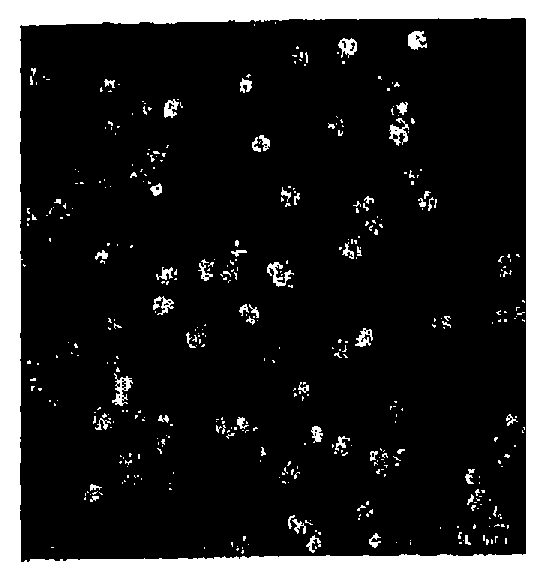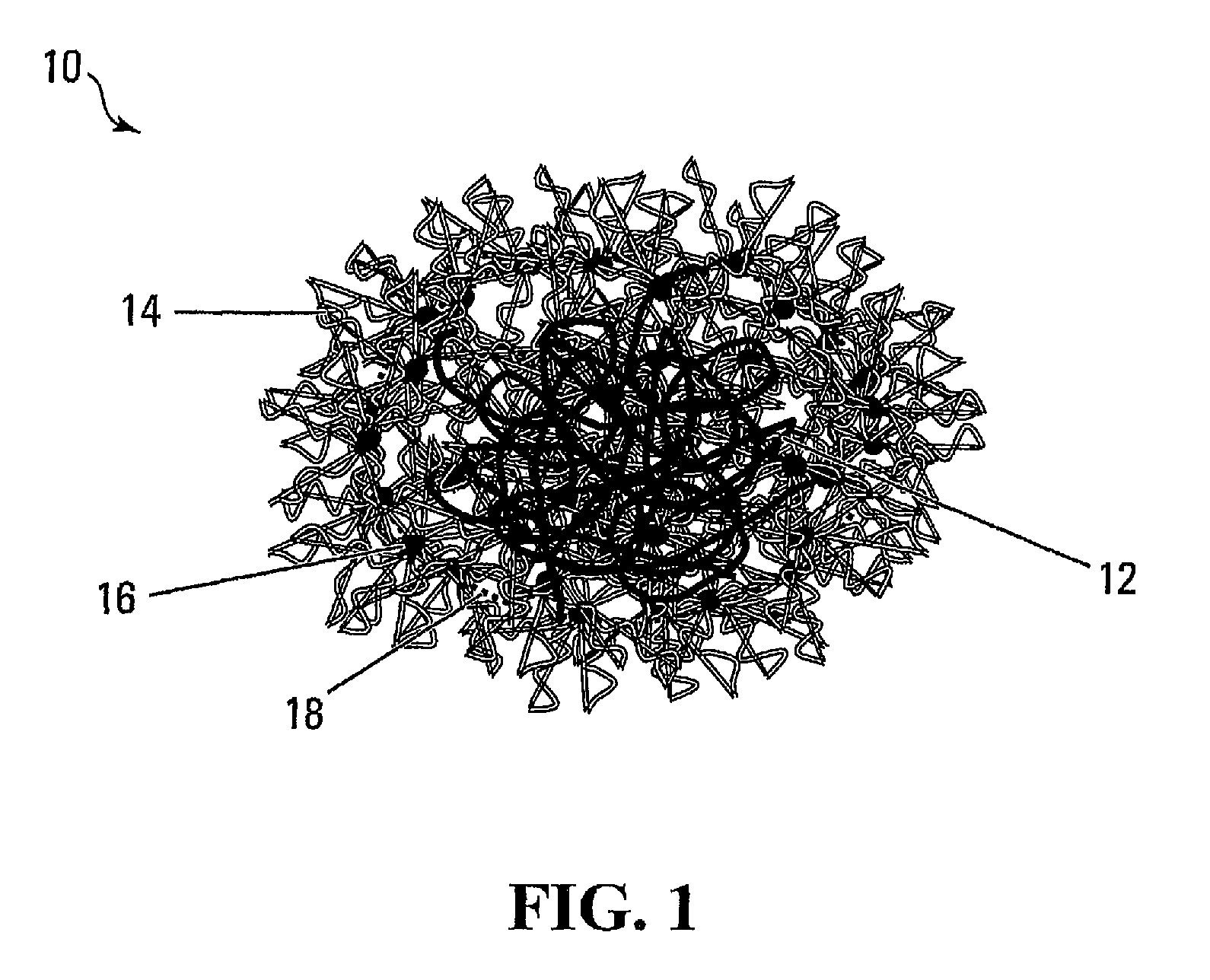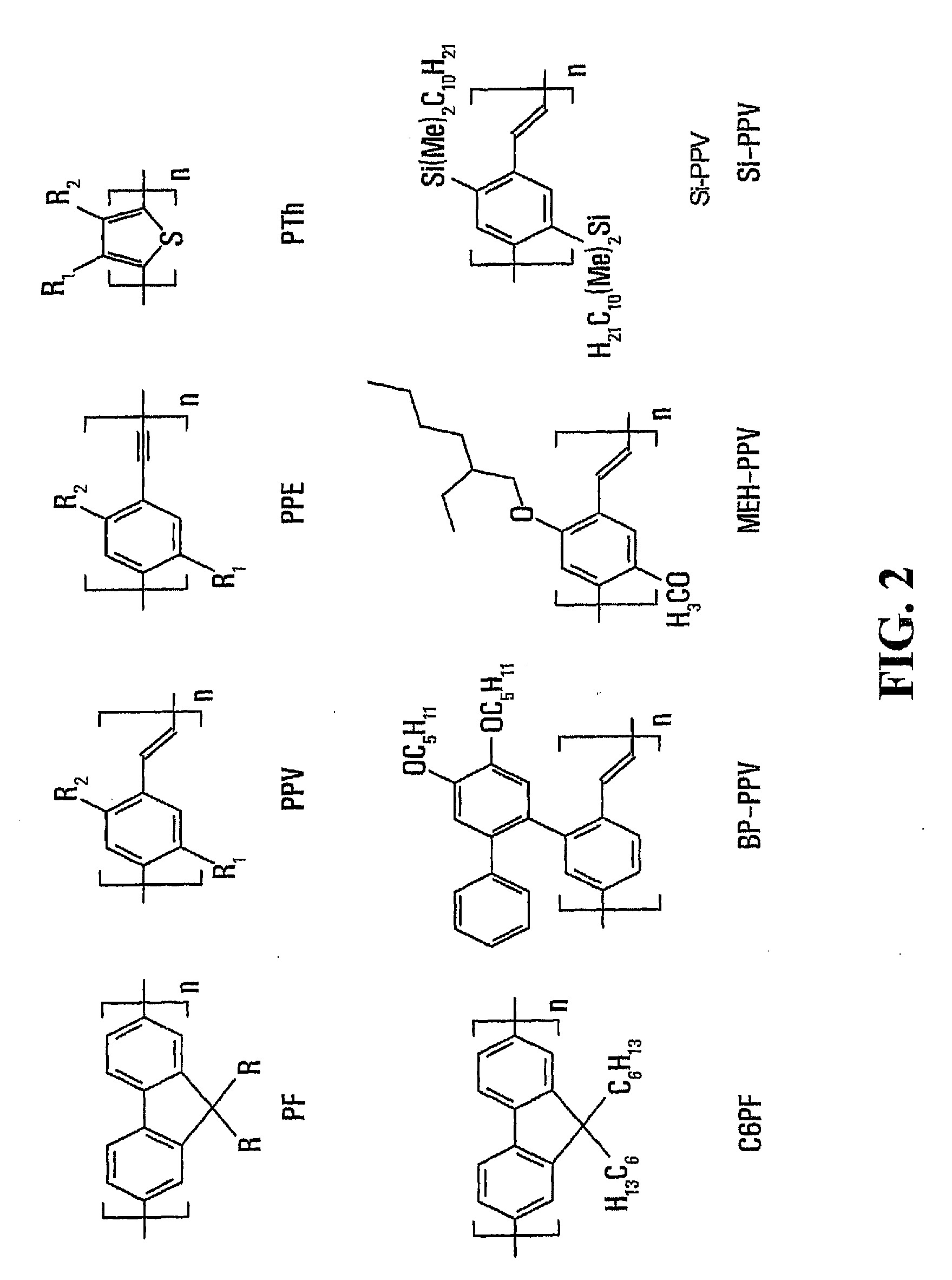Water-Soluble Fluorescent Particle Comprising Entangled Fluorescent Polymer and Amphiphilic Molecule
a fluorescent polymer and amphiphilic molecule technology, applied in the field of fluorescent particles, can solve the problems of complex manufacturing process of multi-color organic dyes and gfps, unreliability, and drawbacks of conventional fluorophores
- Summary
- Abstract
- Description
- Claims
- Application Information
AI Technical Summary
Problems solved by technology
Method used
Image
Examples
example 1
[0070]A Sample I solution was prepared as follows.
[0071]A solution of MEH-PPV in a THF solvent was prepared. The concentration of MEH-PPV in the solution was 1 mg / g.
[0072]20 mg of POSS-PEO was added to 20 mg of the MEH-PPV solution. The solution was diluted to 1 ml by adding THF to form the precursor solution.
[0073]The precursor solution was mixed with 10 g of deionized water in a 20 ml glass bottle. The precursor solution was added drop-wise to the water in the bottle over a two-minute period, during which time the contents of the bottle were sonicated. After mixing, the contents of the bottle were further sonicated for five more minutes.
[0074]The mixed liquid was stirred at room temperature for two days to remove THF by evaporation, using a magnetic stirrer.
[0075]The resulting solution was filtered with a 1-μm filter to remove aggregated particles. The filtered solution was the Sample I solution, which contained fluorescent nanoparticles. In the nanoparticles, the MEH-PPV molecule...
example 2
[0078]A Sample II solution was prepared similarly as the Sample I solution, except that the amount of the MEH-PPV THF solution used to form the precursor solution was 10 mg. As a result, the ratio of MEH-PPV to POSS-PEO in the precursor solution was about 0.05 wt %.
[0079]FIG. 5A shows a TEM image taken from the Sample II solution. The dark dots are images of the particles. Judging from the image, the particle sizes vary from about 140 nm to about 165 nm.
example 3
[0080]A Sample III solution was prepared similarly as the Sample I solution, except that the amount of the MEH-PPV THF solution used was 30 mg. As a result, the ratio of MEH-PPV to POSS-PEO in the precursor solution was about 0.15 wt %.
[0081]FIG. 5B shows a TEM image taken from the Sample III solution. The dark dots are images of the particles. The images of FIGS. 5A and 5B indicate that the particle sizes in Sample II solution and Sample III solution were similar.
PUM
| Property | Measurement | Unit |
|---|---|---|
| Fraction | aaaaa | aaaaa |
| Fraction | aaaaa | aaaaa |
| Particle size | aaaaa | aaaaa |
Abstract
Description
Claims
Application Information
 Login to View More
Login to View More - R&D
- Intellectual Property
- Life Sciences
- Materials
- Tech Scout
- Unparalleled Data Quality
- Higher Quality Content
- 60% Fewer Hallucinations
Browse by: Latest US Patents, China's latest patents, Technical Efficacy Thesaurus, Application Domain, Technology Topic, Popular Technical Reports.
© 2025 PatSnap. All rights reserved.Legal|Privacy policy|Modern Slavery Act Transparency Statement|Sitemap|About US| Contact US: help@patsnap.com



